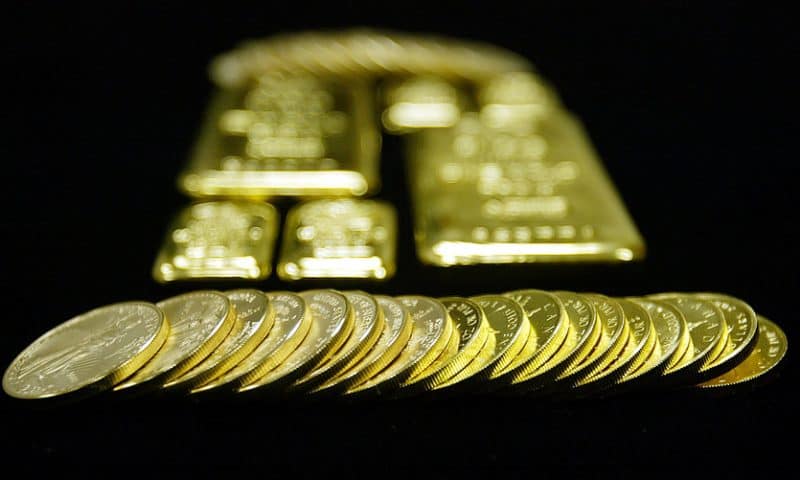Silver futures at highest levels since September 2016
Gold futures shook off earlier losses on Wednesday to finish at a fresh six-year peak, buoyed by economic worries and weakness in the dollar.
Silver prices outpaced gold’s gains to end higher for a third straight session, with the white metal notching its highest finish in about three years.
December gold GCZ19, -0.44% added $4.50, or nearly 0.3%, to settle at $1,560.40 an ounce, after surging 1.7% Tuesday on Comex, closing around the highest for a most-active contract since April 2013, according to FactSet data.
Prices for the yellow metal had spent part of the session trading lower, pressured by a rebound in global equity markets on the back of signs that tensions in Hong Kong — a source of global anxieties — were momentarily easing.
Silver for December delivery SIZ19, -0.21%, meanwhile, rose 31 cents, or 1.6%. to $19.547 an ounce, extending its 4.9% gain from Tuesday and marking its highest level since Sept. 26, 2016, when the metal settled at $19.60 an ounce.
“Silver is still playing catch-up with gold and trading in very heavy volume,” said Rhona O’Connell, head of market analysis, EMEA and Asia regions, at INTL FCStone.
“It looks as if it is massively overbought and cannot have the energy to push further. It may well have this energy, however,” she said, noting that it’s “perfectly possible to postulate that silver can clear $20” an ounce.
A firm retreat in the U.S. dollar Wednesday provided support for gold. A measure of the buck, the ICE U.S. Dollar Index DXY, +0.02%, a gauge of the U.S. unit against a basket of a half-dozen currencies, was down 0.6% at 98.458. A weaker dollar tends to make gold and other dollar-priced metals more attractive to buyers using other currencies.
On Wednesday afternoon, gold futures extended their price gains into electronic trading after the Federal Reserve’s Beige Book, the central bank’s periodic examination of the U.S. economy, showed that the overall economy expanded at the same “modest pace” seen in earlier reports this year. Gold was at $1,564.10 shortly after the release.
“The fact is that the [Federal Reserve’s rate-setting Federal Open Market Committee] is divided in terms of their next monetary policy move, while investors have already priced in another interest rate cut,” said Naeem Aslam, chief market analyst at TF Global Markets Ltd, in a daily research note. “The U.S. economic data is going to continue to suffer from trade war and as long as this remains as a main denominator, we believe that gold can easily cross the 1600 mark in the next few weeks,” he said.
Coloring financial trading earlier in the day was the announcement by Hong Kong leader Carrie Lam, that said she would formally withdraw the extradition bill that sparked a monthslong series of demonstrations that hurt the territory’s economy and threatened to disrupt global financial markets.
“Gold has been on a steady run up from $1,400 since the beginning of August, reflecting ongoing worries about political risks and the fear that both the U.S. and Chinese economies will slow down going into 2020,” said Fiona Cincotta, senior market analyst at City Index.
In the U.S., the Institute for Supply Management’s manufacturing index on Tuesday fell to 49.1% in August from 51.2% in July, marking the first contraction in the index in 35 months. Any reading below 50% indicates worsening conditions.
Early Wednesday, New York Fed President John Williams said the economy remains in “a favorable place,” but the outlook was looking worse than previously thought.
Other metals traded on Comex finished higher, with December copper HGZ19, +0.40% up 6.7 cents, or 2.7%, at $2.595 a pound. October platinum PLV19, +0.72% added $28.60, or 3%, to $984.20 an ounce and December palladium PAZ19, +0.06% rose $16.90, or 1.1%, to $1,552.10 an ounce.

